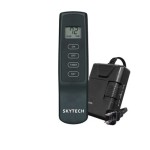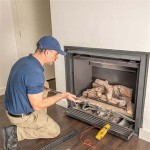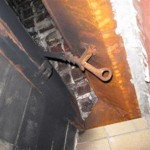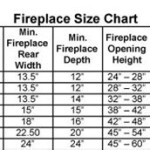Gas Fireplace With TV On Top: Considerations for Safe and Functional Design
The integration of a gas fireplace and a television above it is a popular design choice for many homes. This combination offers both aesthetic appeal and functional efficiency, creating a focal point for living spaces. However, the close proximity of a heat source and electronic equipment raises important considerations regarding safety, installation, and long-term performance. Proper planning and adherence to safety guidelines are crucial to ensure a successful and reliable setup.
One of the primary concerns when placing a television above a gas fireplace is the potential for heat damage. Televisions are sensitive electronic devices designed to operate within specific temperature ranges. Excessive heat exposure can lead to various issues, including screen discoloration, reduced lifespan, and component failure. Gas fireplaces, by their nature, generate significant heat, which rises and can potentially impact the television above.
Therefore, careful consideration must be given to managing and mitigating the heat generated by the fireplace. This involves understanding the fireplace's heat output, the television's heat tolerance, and the available methods for diverting or reducing heat flow. Factors such as the fireplace's BTU rating (British Thermal Units), the distance between the fireplace and the television, and the presence of a mantel or other heat shields play a significant role in determining the safety and feasibility of the installation.
Understanding Fireplace Heat Output and Television Heat Tolerance
A thorough assessment of the fireplace's heat output is the first step in determining the suitability of placing a television above it. Gas fireplaces are typically rated in BTU, which indicates the amount of heat they produce per hour. A higher BTU rating signifies a greater heat output, necessitating more robust heat management strategies. The fireplace's specifications should be carefully reviewed to understand its maximum heat output capabilities.
Equally important is understanding the television's heat tolerance. Manufacturers typically specify the operating temperature range within which the television is designed to function. Exceeding this temperature range can lead to damage and void the warranty. The television's documentation should be consulted to determine its maximum operating temperature and any specific recommendations regarding heat exposure.
Once both the fireplace's heat output and the television's heat tolerance are known, a comparison can be made to assess the potential for heat-related issues. If the fireplace's heat output is significantly higher than the television's tolerance, additional measures will be necessary to reduce the heat exposure.
Furthermore the type of fireplace influences the heat output. Direct vent fireplaces typically generate less radiated heat than vent-free models. Direct vent fireplaces draw combustion air from outside the house, resulting in a more efficient and controlled burn. Vent-free fireplaces, on the other hand, draw air from inside the room, which can lead to increased heat and humidity.
The placement of the television itself is crucial. Aim for the maximum possible distance between the top of the fireplace and the bottom of the television. A greater distance allows for heat to dissipate before reaching the television. Mounting the television on a tilting bracket can also improve airflow and reduce heat exposure by angling the screen slightly downward.
The Role of Mantels and Heat Shields
A mantel serves as a physical barrier that can significantly reduce the amount of heat reaching the television. The mantel acts as a heat shield, deflecting rising heat away from the television screen. The size and material of the mantel are important factors in its effectiveness. A wider and deeper mantel will provide greater heat deflection.
The material of the mantel also influences its heat-shielding properties. Non-combustible materials such as stone, brick, or concrete are ideal for mantels above gas fireplaces. These materials can withstand high temperatures without warping or igniting. Wood mantels can be used, but they must be properly treated with a fire-retardant coating and installed with adequate clearance from the fireplace opening.
In addition to a mantel, a dedicated heat shield can provide an extra layer of protection for the television. Heat shields are typically made of metal and are designed to be installed above the fireplace opening, directly below the television. These shields deflect rising heat outward, preventing it from reaching the television screen. Heat shields are available in various sizes and designs to suit different fireplace and television configurations.
The effectiveness of a mantel or heat shield can be further enhanced by incorporating ventilation. Openings or vents in the mantel or heat shield allow for air to circulate, dissipating heat and preventing it from building up behind the television. Proper ventilation is crucial for maintaining a safe operating temperature for the television.
Consider custom built solutions. Building a deeper cavity around the fireplace can create more separation and allow for better air circulation. Incorporating vents into the design can further enhance heat dissipation. A professional contractor can assist in designing and building a custom fireplace surround that effectively manages heat and protects the television.
Proper Installation and Ventilation Practices
Professional installation is essential for ensuring the safe and proper operation of both the gas fireplace and the television. A qualified technician can assess the installation site, determine the appropriate clearances, and ensure that all applicable building codes and safety regulations are followed. Improper installation can lead to safety hazards, such as gas leaks or electrical fires.
The installation of the gas fireplace should adhere to the manufacturer's instructions and all relevant local and national codes. Proper venting is crucial for ensuring that combustion gases are safely exhausted from the home. Incorrect venting can lead to carbon monoxide buildup, which is a serious health hazard. A professional installer will ensure that the venting system is properly sized and installed to prevent backdrafting and other problems.
Electrical wiring for both the gas fireplace and the television must also be installed according to code. All electrical connections must be properly grounded and protected against overload. It is advisable to use a surge protector to protect the television and other electronic components from power surges, which can occur during storms or power outages.
Adequate ventilation is crucial for dissipating heat and preventing it from building up around the television. The installation should allow for sufficient airflow around the television and the fireplace. Avoid blocking vents or restricting airflow in any way. Consider using fans to circulate air and help dissipate heat. Ceiling fans or small portable fans can be strategically placed to improve airflow and reduce heat exposure.
It is vital to monitor the temperature behind the television after installation. Temperature sensors can be used to track the temperature and ensure that it remains within the television's operating range. These sensors can be connected to an alarm system that will alert you if the temperature exceeds a safe level. Regular monitoring can help identify potential issues early on and prevent damage to the television.
Smoke detectors and carbon monoxide detectors are essential safety devices for any home with a gas fireplace. These detectors should be installed in accordance with the manufacturer's instructions and local codes. Regularly test the detectors to ensure that they are functioning properly. Replace the batteries at least twice a year or as recommended by the manufacturer.
In summary, integrating a gas fireplace and a television above it requires careful planning and execution. Understanding the fireplace's heat output, the television's heat tolerance, and the role of mantels and heat shields is crucial for ensuring a safe and functional installation. Proper installation and ventilation practices are essential for preventing heat damage and maintaining a comfortable and safe living environment. Regular monitoring and maintenance can help identify potential issues early on and prolong the lifespan of both the fireplace and the television.

Can I Mount My Tv Above The Fireplace

Should I Mount A Tv Over Hole In The Wall Gas Fire Rigbys

40 Stone Fireplace Designs From Classic To Contemporary Spaces Basement Home

Result For Gas Fireplace With Tv Above Contemporary Designs Design

Heatilator Rave Series Gas Fireplace

Ortal S Innovative Technology Makes It Safe To Mount A Tv Above Your Fireplace

ᑕ❶ᑐ What To Consider Before Mounting A Tv Above Fireplace

How To Get The Wall Mounted Tv And Electric Fireplace Setup Of Your Dreams Yorkshire Stoves Fireplaces
4 Creative Ideas For Placing Your Tv And Escea Fire Together Architecture Design

Media Wall Fireplaces Explained Stovax Gazco
Related Posts








